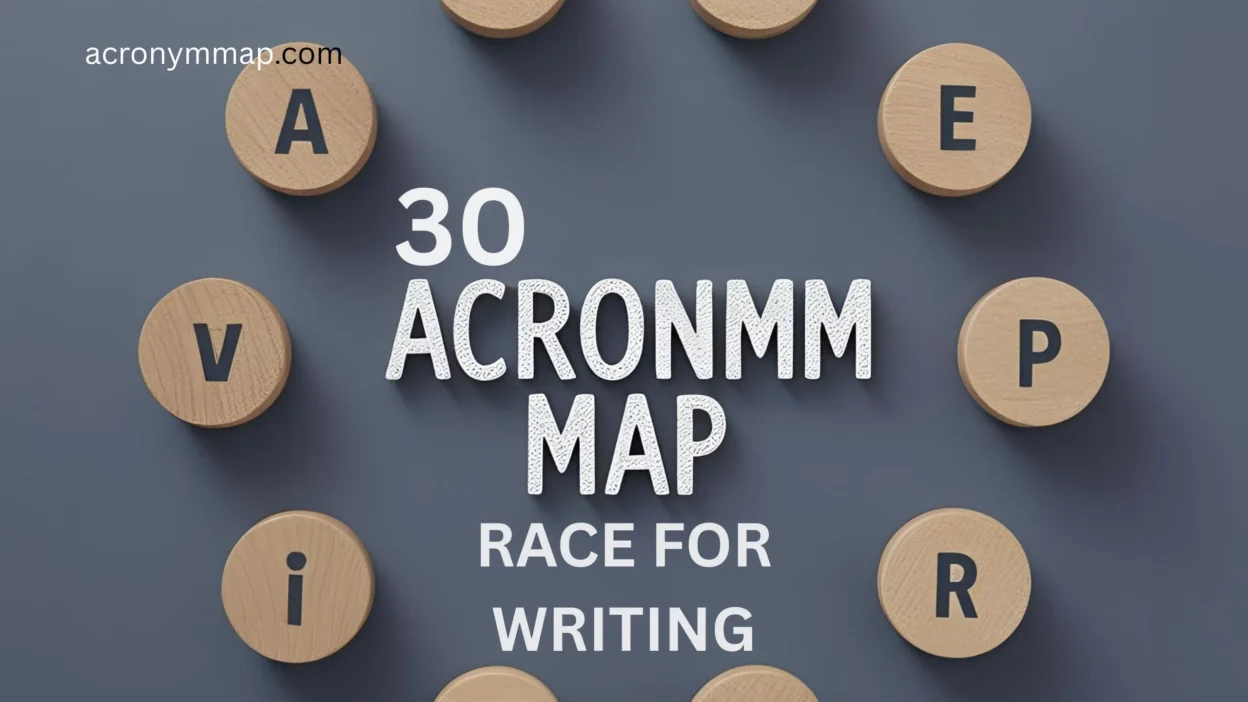The RACE acronym is a popular writing strategy used primarily in education to help students structure written responses clearly and effectively. In its most common form, RACE stands for:
- R – Restate the question
- A – Answer the question
- C – Cite evidence
- E – Explain the evidence
This structure is often used in essays, open-ended reading responses, and standardized tests. But while RACE is clear and simple, there are many alternatives and variations that offer slightly different focuses, tones, or levels of depth depending on the writing task.
Below, you’ll find 30 RACE-style acronyms, each tailored to different writing contexts—from persuasive essays and literary analysis to science responses and reflective writing. Each comes with a brief breakdown and example so you can choose the best fit for your purpose.
🔄 30 Alternatives to the RACE Acronym for Writing
1. RACES
Meaning: Restate, Answer, Cite, Explain, Summarize
Example: Use RACES for longer reading responses that need a concluding thought.
Best for: Extended written responses in ELA.
2. ACE
Meaning: Answer, Cite, Explain
Example: Use ACE when you want a shorter, punchy response.
Best for: Quick in-class assessments.
3. RAP
Meaning: Restate, Answer, Prove
Example: RAP encourages citing textual evidence as “proof.”
Best for: Middle-grade readers learning to support answers.
4. PEEL
Meaning: Point, Evidence, Explain, Link
Example: PEEL is excellent for building analytical paragraphs.
Best for: Argumentative and literary essays.
5. TEE
Meaning: Topic, Evidence, Explain
Example: TEE structures writing like a mini-essay.
Best for: Compact paragraph writing.
6. RACE2
Meaning: Restate, Answer, Cite, Explain, Expand
Example: Use RACE2 when students need to deepen their analysis.
Best for: Advanced ELA students.
7. RAFT
Meaning: Role, Audience, Format, Topic
Example: RAFT encourages creative responses and point of view writing.
Best for: Creative or persuasive writing prompts.
8. SEE
Meaning: Statement, Evidence, Explanation
Example: SEE helps organize persuasive or expository writing.
Best for: Middle school writers.
9. CER
Meaning: Claim, Evidence, Reasoning
Example: CER is common in science writing to explain results.
Best for: Scientific explanations and lab reports.
10. TIE
Meaning: Topic sentence, Introduce evidence, Explain
Example: TIE keeps paragraphs focused and coherent.
Best for: Analytical writing.
11. ABC
Meaning: Answer, Back it up, Connect
Example: ABC is memorable and works well in early writing lessons.
Best for: Grades 3–5.
12. ICE
Meaning: Introduce, Cite, Explain
Example: ICE teaches how to blend quotes smoothly into writing.
Best for: High school literary analysis.
13. TAC
Meaning: Thesis, Argument, Conclusion
Example: TAC focuses on essay-level structure.
Best for: Formal academic essays.
14. REEL
Meaning: Restate, Explain, Evidence, Link
Example: REEL provides a flow for extended responses.
Best for: Structured writing in upper grades.
15. PQA
Meaning: Point, Quote, Analyze
Example: PQA builds close reading and deeper analysis skills.
Best for: Literary response writing.
16. EBC
Meaning: Evidence-Based Claim
Example: Use EBC when you’re focusing on argumentation.
Best for: Argumentative essays.
17. APE
Meaning: Answer, Prove, Explain
Example: APE helps students “go bananas” for evidence!
Best for: Fun, engaging classrooms.
18. DEAL
Meaning: Define, Explain, Apply, Link
Example: DEAL is great for concept writing.
Best for: Science or history essays.
19. SEED
Meaning: State, Explain, Evidence, Develop
Example: SEED helps grow ideas into full responses.
Best for: Literary and thematic writing.
20. TEXAS
Meaning: Topic, Explain, eXample, Analysis, Summary
Example: TEXAS creates structured, multi-part paragraphs.
Best for: Extended literary essays.
21. FARM
Meaning: Focus, Answer, Refer to text, Make meaning
Example: FARM encourages comprehension and deeper thinking.
Best for: Reading comprehension responses.
22. PEAS
Meaning: Point, Evidence, Analysis, Summary
Example: PEAS is perfect for strong, complete responses.
Best for: Argument or persuasive writing.
23. LADDER
Meaning: Lead-in, Answer, Details, Develop, Evaluate, Reflect
Example: LADDER guides more advanced academic writing.
Best for: High school and college writing.
24. PIE
Meaning: Point, Illustrate, Explain
Example: PIE makes writing “tasty” and structured.
Best for: Middle school essays.
25. SPRE
Meaning: State, Prove, Reason, Evaluate
Example: SPRE supports critical and evaluative writing.
Best for: Argumentative essays.
26. IRAE
Meaning: Introduce, Respond, Analyze, Evaluate
Example: IRAE is for higher-order thinking and response.
Best for: College-level discussions.
27. PACT
Meaning: Point, Answer, Cite, Tie-back
Example: PACT helps students link ideas clearly.
Best for: ELA and social studies.
28. STEP
Meaning: Statement, Textual support, Explanation, Proof
Example: STEP helps students walk through an argument.
Best for: Evidence-based writing.
29. PEARL
Meaning: Point, Evidence, Analysis, Reflect, Link
Example: PEARL shines in essays that require deeper thinking.
Best for: Advanced literature analysis.
30. TREE
Meaning: Topic sentence, Reasons, Examples, Ending
Example: TREE helps young writers grow strong paragraphs.
Best for: Elementary writing instruction.
🎯 Choosing the Right Acronym for the Writing Task
When selecting an acronym strategy for writing, consider:
- Grade level: Younger students may do better with simple structures like PIE or ACE, while older students benefit from PEEL or CER.
- Writing goal: Choose RAFT or FARM for creative prompts; use CER or DEAL for factual or scientific analysis.
- Assessment type: RACES, PEAS, and REEL work well for standardized test responses or formal assessments.
- Tone and formality: For reflective or expressive writing, opt for SEED, PEARL, or LADDER; for structured argument, go with PACT or SPRE.
🧠 Final Thoughts
The RACE acronym has become a classic tool in the writer’s toolkit for good reason—it teaches structure, evidence, and clarity. But there’s no one-size-fits-all in writing. The 30 alternatives shared here give you the flexibility to match your strategy to your purpose.
Whether you’re a teacher planning lessons, a student crafting essays, or a writer refining your voice, having a menu of acronym structures empowers you to express yourself better, deeper, and smarter.
So next time you’re stuck on how to begin a paragraph or organize your thoughts, think beyond RACE—and pick the acronym that helps your writing win the race with style.

